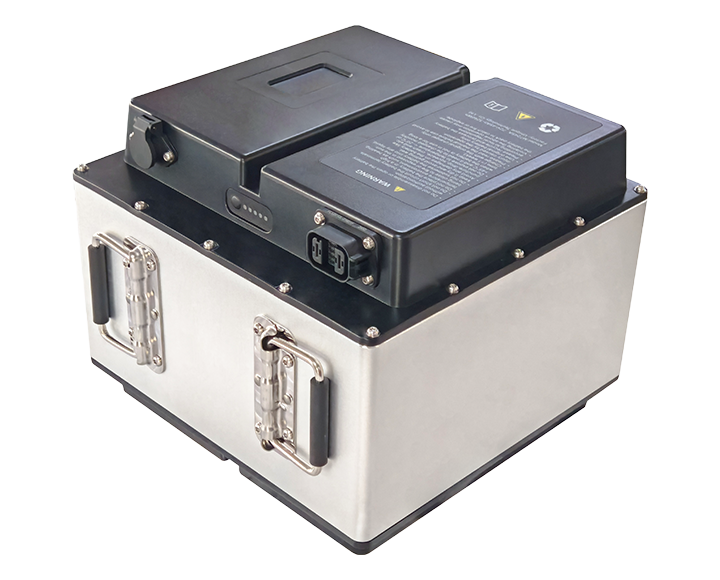Understanding 76.8V Motorcycle Lithium Batteries: The Future of Electric Mobility
Lithium batteries have revolutionized the electric vehicle (EV) industry, particularly in the realm of motorcycles. Among various voltage options, the 76.8V motorcycle lithium battery stands out as a compelling choice for both manufacturers and riders. This voltage configuration is particularly useful in balancing performance and efficiency, making it an attractive option for electric motorcycle a
2025-06-28

Lithium batteries have revolutionized the electric vehicle (EV) industry, particularly in the realm of motorcycles. Among various voltage options, the 76.8V motorcycle lithium battery stands out as a compelling choice for both manufacturers and riders. This voltage configuration is particularly useful in balancing performance and efficiency, making it an attractive option for electric motorcycle applications.
One of the primary advantages of the 76.8V lithium battery is its ability to offer a higher energy density compared to traditional lead-acid batteries. This means that a 76.8V lithium battery can store more energy in a smaller and lighter package, which is crucial for motorcycles where weight plays a significant role in performance and handling. With a lighter battery, riders can enjoy enhanced acceleration, improved range, and better overall efficiency.
Another critical aspect of 76.8V lithium batteries is their longer lifespan. Typically, lithium batteries can endure several thousand charge cycles, significantly outpacing the performance of lead-acid counterparts. This longevity translates to lower maintenance costs and reduced frequency of battery replacements, which is especially beneficial for commercial applications and frequent riders.
Additionally, the 76.8V configuration allows for efficient power management. With the right battery management system (BMS), users can monitor the health of the battery, optimize charging cycles, and ensure safety through various protective measures against over-voltage, under-voltage, and temperature fluctuations. Such systems enhance the reliability of the motorcycles and provide peace of mind to the users.
When considering a 76.8V motorcycle lithium battery, it is essential to pay attention to the battery's discharge rate and overall power output. Different applications may require varying levels of power, and understanding these specifications can help users make informed decisions tailored to their specific needs.
Charging infrastructure is also a vital consideration. As the demand for electric motorcycles grows, so does the need for accessible and efficient charging solutions. Many modern lithium batteries support fast charging, significantly reducing the downtime associated with recharging, which is particularly advantageous for urban riders.
In conclusion, the 76.8V motorcycle lithium battery represents a significant advancement in electric mobility. Its benefits, including higher energy density, longer lifespan, and efficient power management, make it an ideal choice for modern electric motorcycles. As the industry continues to evolve, staying informed about these technologies will empower users and professionals to make better choices that enhance performance and sustainability in the e-mobility sector.
One of the primary advantages of the 76.8V lithium battery is its ability to offer a higher energy density compared to traditional lead-acid batteries. This means that a 76.8V lithium battery can store more energy in a smaller and lighter package, which is crucial for motorcycles where weight plays a significant role in performance and handling. With a lighter battery, riders can enjoy enhanced acceleration, improved range, and better overall efficiency.
Another critical aspect of 76.8V lithium batteries is their longer lifespan. Typically, lithium batteries can endure several thousand charge cycles, significantly outpacing the performance of lead-acid counterparts. This longevity translates to lower maintenance costs and reduced frequency of battery replacements, which is especially beneficial for commercial applications and frequent riders.
Additionally, the 76.8V configuration allows for efficient power management. With the right battery management system (BMS), users can monitor the health of the battery, optimize charging cycles, and ensure safety through various protective measures against over-voltage, under-voltage, and temperature fluctuations. Such systems enhance the reliability of the motorcycles and provide peace of mind to the users.
When considering a 76.8V motorcycle lithium battery, it is essential to pay attention to the battery's discharge rate and overall power output. Different applications may require varying levels of power, and understanding these specifications can help users make informed decisions tailored to their specific needs.
Charging infrastructure is also a vital consideration. As the demand for electric motorcycles grows, so does the need for accessible and efficient charging solutions. Many modern lithium batteries support fast charging, significantly reducing the downtime associated with recharging, which is particularly advantageous for urban riders.
In conclusion, the 76.8V motorcycle lithium battery represents a significant advancement in electric mobility. Its benefits, including higher energy density, longer lifespan, and efficient power management, make it an ideal choice for modern electric motorcycles. As the industry continues to evolve, staying informed about these technologies will empower users and professionals to make better choices that enhance performance and sustainability in the e-mobility sector.
Key words:
Related News


